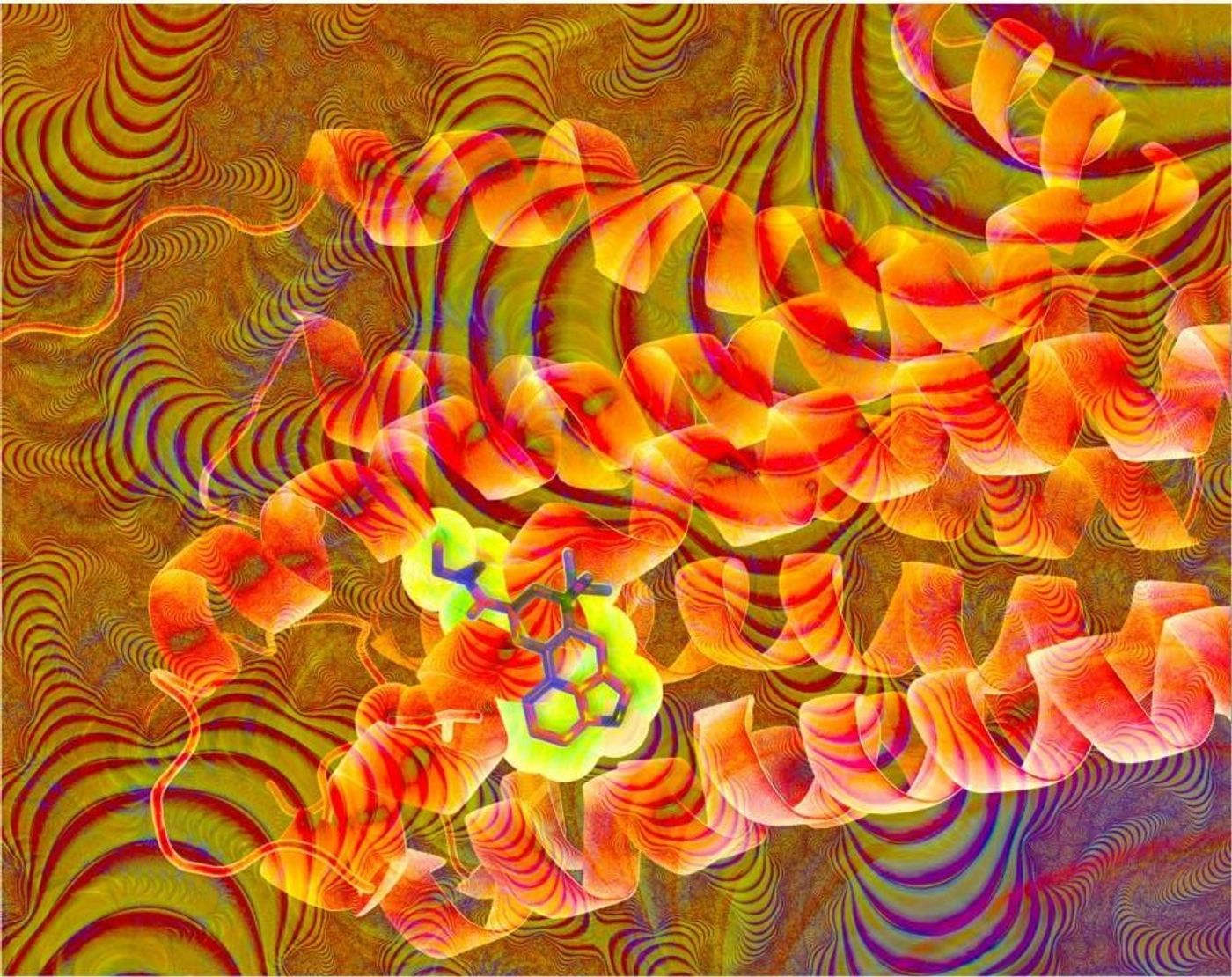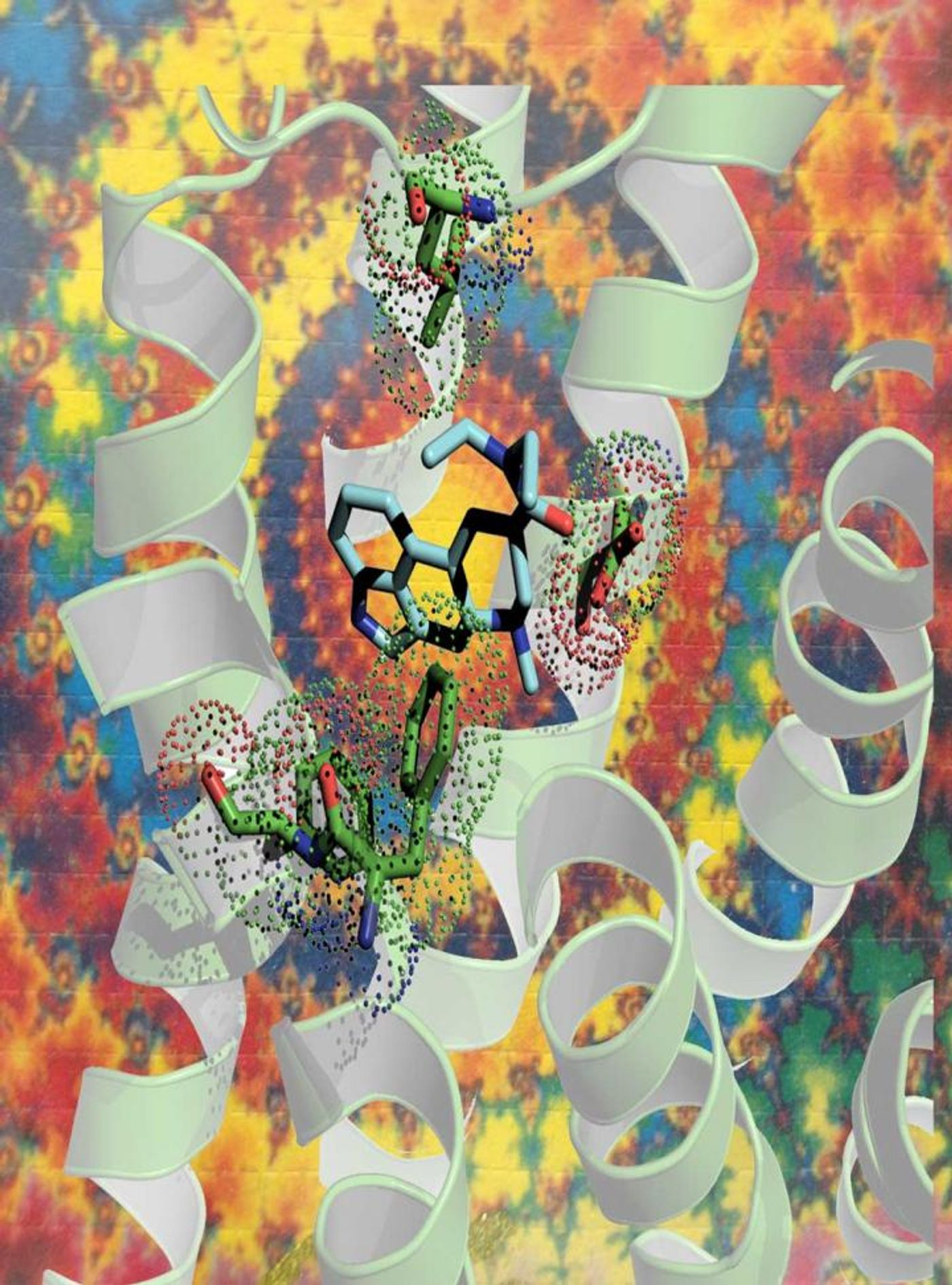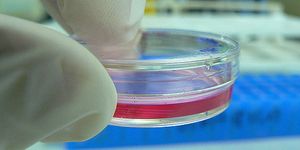LSD Potently Locks Into its Receptor
The hallucinogenic effects of LSD, lysergic acid diethylamide, are very long lasting; a dose of the drug can act for over 12 hours. Reporting in the journal Cell, researchers have now revealed that the nature of the physical interaction between LSD and its receptor underlies this lengthy impact. Crystallography images showed the investigators that the drug gets wedged into the binding region of the serotonin receptor in an unexpected way. The receptor also ends up bending over in a way that locks the LSD inside of it.
"Once LSD gets in the receptor, a lid comes over the LSD, so it's basically trapped in the receptor and can't get out," explained one of the senior authors of the work, Bryan Roth (@zenbrainest), a Professor of Pharmacology at University of North Carolina. "LSD takes a really long time to get on the receptor, and then once it gets on, it doesn't get off.
"When I was younger, and The Grateful Dead was still around, I would occasionally go to Grateful Dead concerts. A lot of people took LSD and similar drugs during concerts, and it would be interesting to be in the parking lot hearing people wondering when their LSD experience was going to end," said Roth. "A lot of people who take the drug are not aware of just how long it lasts."
LSD seems to be experiencing a bit of a resurgence of late. Some researchers have been trying out hallucinogens in therapy for some medical conditions. It has some potential for psychiatric treatments, or at least might inform the development of new drugs. Many of these therapies use only a very small amount of LSD; this new study sheds light on why users experience the effects for an entire day.
Roth’s team also wanted to know more about LSD micro-dosing, and looked at living cells that had been exposed to very small amounts of the drug. Micro-dose levels of LSD did alter receptor signaling on the cells. That does not show however, how that works in living cells inside of people, but it does suggest that those low levels could in fact be exerting a real influence in people.
The team also saw that if the LSD receptors were mutated so they did not lock the drug inside very well, the LSD popped out of the binding pocket more quickly. That also resulted in a truncation in receptor changes.
"I think it's important for the pharmaceutical industry to understand that even if you modify just one tiny aspect of any compound, you may affect the way the entire compound sits in the receptor, and that affects the compound's performance," said the first author of the work, Daniel Wacker, a postdoctoral fellow at UNC.
You can see a talk from David E. Nichols, PhD on the neuroscience of LSD in the video above, or watch a shorter below video that gives an overview of LSD and its history.
Sources: AAAS/Eurekalert! via Cell Press News, Assay and Drug Development Technologies, Cell










